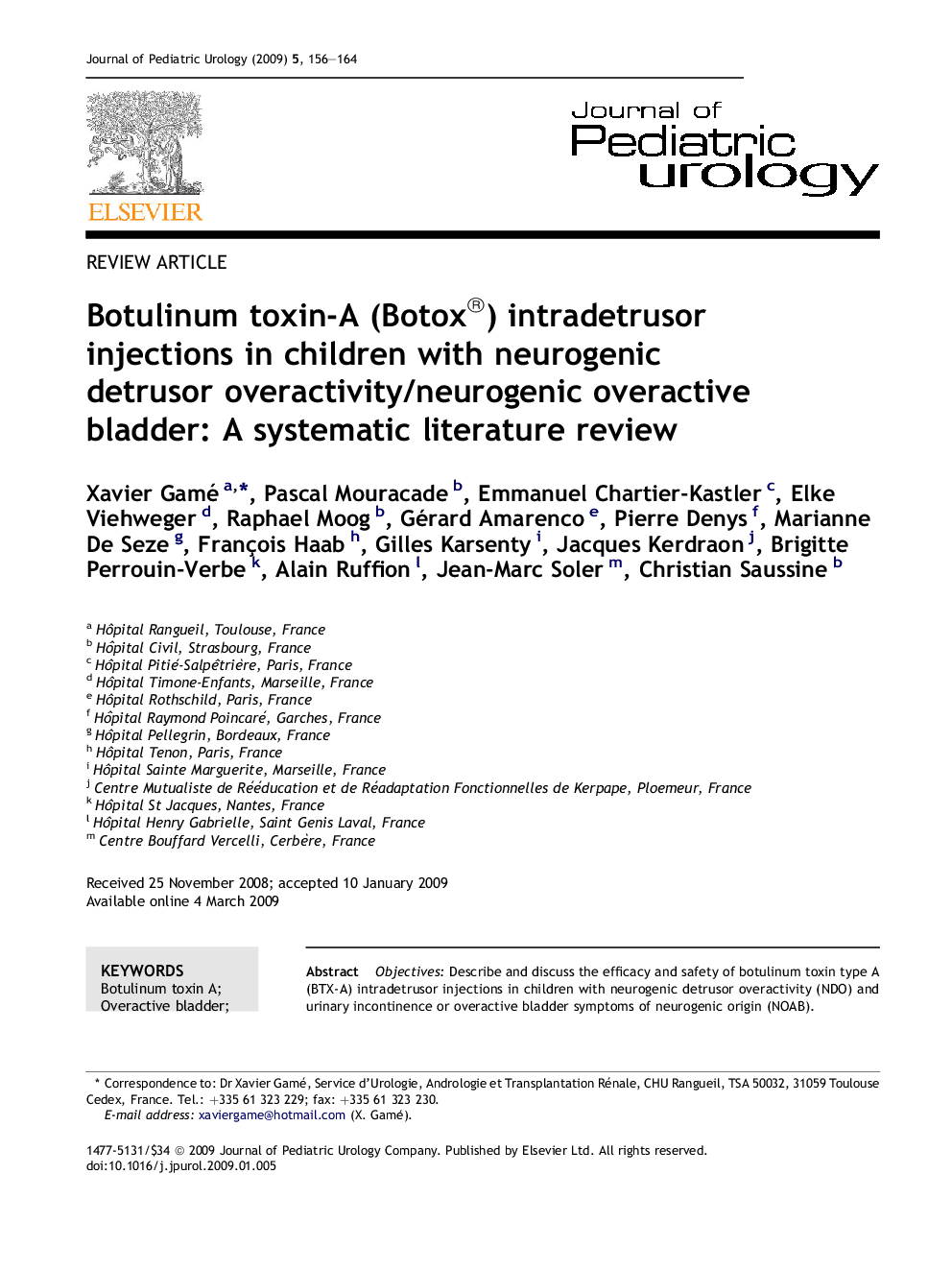| Article ID | Journal | Published Year | Pages | File Type |
|---|---|---|---|---|
| 4163340 | Journal of Pediatric Urology | 2009 | 9 Pages |
ObjectivesDescribe and discuss the efficacy and safety of botulinum toxin type A (BTX-A) intradetrusor injections in children with neurogenic detrusor overactivity (NDO) and urinary incontinence or overactive bladder symptoms of neurogenic origin (NOAB).MethodsA MEDLINE and EMBASE search for clinical studies involving BTX-A injected into the detrusor of children with NDO or NOAB was performed, prior to data analysis.ResultsA total of six articles evaluating the efficacy and safety of Botox® in patients with NDO and incontinence/NOAB were selected. The underlying neurological disease was myelomeningocele in 93% of patients. Most were over 2 years of age. The most common amount of Botox injected was 10–12 U/kg with a maximal dose of 300 U, usually as 30 injections of 10 U/ml in the bladder (excluding the trigone) under cystoscopic guidance and general anaesthesia. Most of the studies reported a significant improvement in clinical (65–87% became completely dry) as well as urodynamic (in most studies mean maximum detrusor pressure was reduced to <40 cm H2O and compliance was increased >20 ml/cm H2O) variables, without major adverse events.ConclusionsBotox injections into the detrusor provide a clinically significant improvement and seem to be very well tolerated in children with NDO and incontinence/NOAB refractory to antimuscarinics.
